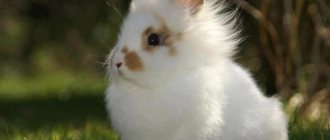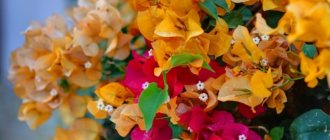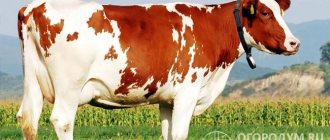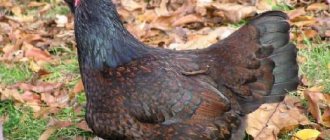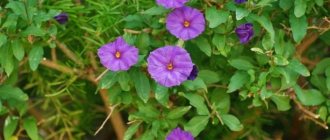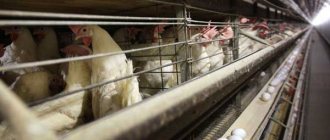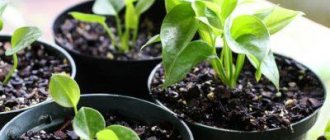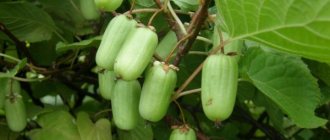Description of pheasant
Pheasants, despite the variety of breeds, have similar features by which they can be unmistakably identified. These chicken-like birds are quite large and have a bright, memorable appearance. Among their main signs:
- Gracefulness.
- Males have beautiful plumage.
Females cannot compete with males in terms of decorativeness. Only males are endowed with bright, colorful feathers. Females have gray plumage, their only “decoration” is black and brown specks, generously scattered throughout the body.
The coloring of males of different breeds is different and depends on their habitat. But, as a rule, all breeds have a green or blue-violet head and neck. Around the eyes there are rings without feathers. Usually the rings are red, but they can have other colors. The color of the plumage depends on the breed of pheasant. Males are lavishly colored; nature has given them the brightest colors - orange, blue, bright red, emerald.
The length of the male is about 80 cm, the female is slightly smaller. Any breed of pheasant can be bred for meat, but preference is given to heavier birds. The choice is made taking into account meat and egg productivity.
Breeding Features
Pheasants are bred by both industrial and private household farms. With the industrial method of cultivation, the emphasis is on accelerated weight gain and increasing the number of livestock. Farms contain up to 10,000 birds. Small farms are focused on meeting their own needs and making a profit from the sale of products.
To start a pheasant breeding business, you will need to buy several families, which, as they multiply, increase the number of livestock. Beginning farmers are recommended to start with silverwood - it grows better than others in a temperate climate.
Why is it profitable to breed pheasants:
- unpretentious when it comes to nutrition;
- gain weight quickly;
- bring real profit to their breeders - from the sale of meat, eggs and feathers.
To breed pheasants on their own, they are placed in families - there should be 2-3 females per male. You can also use other schemes - for 1 male there are from 4 to 7 females. But you should remember - the more females there are per male, the lower the egg production and the fewer fertilized eggs.
The main feature of breeding pheasants is that they cannot be kept in closed cages; this bird needs spacious enclosures covered with mesh.
Females with high egg production lay about 50 eggs per season. But if desired, this figure can be increased to 100 eggs. To do this, laying hens are given:
- Biovit – 0.7 g.
- Terramix-10 – 1.1 g.
- Penicillin sodium salt – 0.3 g.
- Erythromycin – 21.5 g.
- Biomycin – 35-40%.
In the video below, a pheasant breeder shares his knowledge of raising pheasants at home:
Breeding pheasants for hunting
Fattening pheasants for hunting is profitable only if you are confident that you can raise full-fledged adults. In other words, before starting such a business you need to practice a little (Figure 3).
Breeding Features
As a rule, only certain breeds are raised for hunting. Only adult individuals go on sale, and their cost is quite high and fully covers the costs of food and arrangement of the enclosure.
Figure 3. Raising birds for hunting farms
In addition to being raised for hunting, elite breeds are raised for private zoos and animal farms. In this case, the cost of purchasing young animals is significantly higher, and the maintenance of birds must be treated very carefully.
You will learn more information on the topic from the video.
Important aspects of buying poultry
To start a pheasant farm, you can use one of three ways to acquire livestock:
- Catch pheasants in the wild.
- Buy eggs for incubation.
- Buy young or adult birds from a nursery or breeder.
Wild birds are hardy and unpretentious, but they often refuse to breed in captivity. Therefore, a more reliable way is to buy a family or young animals.
Buying eggs
Buying pheasants requires a considerable investment; if finances are tight, start with eggs. This option will be much cheaper. But in order to start a business from an egg, you will need incubators or brood hens. In order for small pheasants to hatch safely, you must have at least minimal experience in breeding birds. And most importantly, in order to get offspring from eggs, you should:
- Transport eggs carefully, avoiding any shaking.
- Prevent temperature changes.
The cost of one hatching egg is 80-110 rubles.
Purchase of chicks
The most productive option for opening your own mini-farm for breeding pheasants is to purchase young animals. You should not take chicks that are too small. The best option is individuals aged 4-5 weeks. Characteristics of healthy young animals:
- active behavior, mobility;
- the food search reflex is well developed;
- good spatial orientation;
- dry, withered umbilical cord;
- absence of growths on the beak and nostrils.
Pheasants have no visible sex differences until they are 3-4 months old.
Prices for young animals:
- One pheasant chick, up to 3 months old, costs 200-300 rubles.
- Individuals aged 3-6 months cost 450-600 rubles.
Adults
When purchasing pheasants, you should carefully examine each individual. You need to pay attention to the following points:
- Age. It is unprofitable to take birds older than 2.5 years. After this age, pheasants' productivity declines.
- Appearance. You should not take individuals that are too thin and have excess fat deposits. To the touch, the bird should be well-fed, dense, and meaty.
- Health status. It is important to examine the feathers near the cloaca. In a healthy bird they are dry, in a sick bird they are wet and dirty.
To prevent inbreeding, it is recommended to take birds from different locations. The offspring obtained as a result of inbreeding have low immunity, and they are often infertile. To begin with, it is recommended to take 2-4 pairs, and when you develop skills in care and breeding, the number can be increased.
Description of the bird
There are 32 varieties that differ in appearance. Pheasants live in forests, meadows, fields, along the banks of rivers and swamps in thickets of reeds and bushes. They nest on the ground, in case of danger they fly up and hide on tree branches, and run quickly. Young chicks and clutches of eggs often fall prey to predators. Pheasants in nature feed on plant shoots, fruits, berries, seeds, small insects, frogs, and crustaceans.
The male is large, weighing up to 3 kg. It has a body 80 cm long, covered with bright plumage (shades of brown, red, green, blue, orange, purple, white), a long tail, a slightly noticeable crest on its head, and spurs on its paws. The wings are small in size.
The female weighs about 1.5-2 kg. Body size 50-60 cm. Color inconspicuous, gray plumage. There are no long feathers in the tail.
Pheasants are actively hunted, but their population is rapidly replenished, so they are not endangered.
Recommended Breeds
The most popular breeds of pheasants:
- Diamond pheasant. Homeland - highlands of China. It is valued for its decorativeness. This is his main advantage. This bird should not be bred for meat. Firstly, it doesn't have much meat. Meat productivity of males is 0.9-1 kg. Secondly, the diamond pheasant does not tolerate cold well - it is necessary to provide the bird with a certain temperature regime. 30-degree frosts will simply destroy this bird. Egg production – 30 eggs per season. Monogamous.
- Silver pheasant. An ideal meat breed for breeding. The silver pheasant, like the diamond pheasant, comes from China, but has perfectly adapted to the Russian climate. Thick plumage helps withstand frost. Weight – 2-6 kg. Egg production – 50 eggs per season. To stimulate productivity and increase egg production, 5-6 eggs are left under the female in the nest. They are raised for meat, for stuffed animals - they decorate hunting houses, restaurants, etc.
- Golden pheasant. Decorative breed. It is not grown on an industrial scale. Weight – up to 1 kg. Egg production – 25 eggs. Requires an insulated poultry house.
Pheasant diseases
Pheasants, like any other birds, may exhibit the following diseases:
- smallpox is a severe viral disease that is characterized by the appearance of a rash on the skin and a sharp loss of body weight;
- Laryngotracheitis is also a dangerous viral disease that is spread by airborne droplets. Manifested by cough, loss of appetite, breathing problems;
- aspergillosis is a fungal disease that affects the bronchi.
Quite often, such ailments cause the death of pheasants.
Birds cleanse themselves of external parasites by taking baths with wood ash.
Common diseases include helminthic infestations, because the proliferation of parasites in the body of pheasants also sooner or later leads to their death. Therefore, it is recommended to periodically give anthelmintic drugs to poultry.
About productivity and breeding goals
There are dozens of breeds of pheasants, but among them there are several, breeds that are especially popular among farmers and breeders are bred for meat, while others are bred for hunting or for decorative purposes. Raising pheasants at home rarely brings real profit; only a large farm can become truly profitable.
When choosing an ornamental breed for breeding, the main thing you pay attention to is the exterior of the bird, its ability to reproduce in captivity and the requirements for living conditions.
When breeding pheasants for meat, the appearance of the bird is secondary, the main thing is their meat productivity. And if the farmer is going to independently replenish the livestock, then the egg production capacity of the breed is also of great importance. The most highly productive meat breeds (weight of males compared):
- Steppe hunting - 1.7-2 kg.
- White – 2.3-2.7 kg.
- Lemon – 1.9-2.1 kg.
- Eared - 2.3-2.7 kg.
- Romanian – 2.4-2.8 kg.
Other breeds of pheasants cannot boast of high meat productivity; the weight of males is from 0.9 to 1.7 kg.
The egg production of pheasants varies from 25 to 50 eggs per season and depends on the breed. The Silver Pheasant has the highest egg production. This breed optimally combines high meat and egg productivity, which is why it tops the popularity rating among farmers.
Aviaries for raising domestic pheasants on a farm
To keep pheasants on a personal plot, enclosures are used, where in conditions close to natural, where the birds can find food that they like and is especially well digested. It is in aviaries built on a personal plot that there are no problems with greenery and sprouted seeds (when birds eat seeds from feeders, they scatter them, they sprout, and from time to time the ground is covered with fresh tender shoots of plants). Animal food is also available to those birds that live in an outdoor aviary and do not sit in cages. In the soil, on the branches of bushes and in the grass, they constantly find various small insects and their larvae.
The video “Pheasant Breeding” shows the conditions in which birds should be kept:
When breeding pheasants, the amount of feed required per day is determined experimentally, since even birds of the same breed and age, with the same method of keeping, have different appetites. By carefully observing your pets, you can determine their need for food. The entire daily allowance of feed should be consumed by the bird without leaving any traces. To raise a hunting pheasant, for example, you need on average 80 g of feed per head. At home, when breeding pheasants, birds are fed twice a day: in the morning they are given soft food, in the afternoon - a grain mixture.
Content requirements
To breed pheasants, it is necessary to fulfill two main conditions for their maintenance:
- The norm of area per individual for family keeping is 2 sq. m. If the birds are kept in large groups in enclosures - 5 sq. m. m.
- Aviary. Pheasants, unlike other poultry, need an enclosure fenced on all sides, including from above, so that the birds do not fly out. Birds spend winter and summer in these enclosures; there is no need to build special winter huts for them. If, of course, the breed can withstand the low temperatures characteristic of a particular area. Otherwise, you will have to equip insulated winter huts.
When pheasants are kept for meat, they are housed in large groups. They are fed with regular chicken feed. Feeding pheasants depends on the breed - each has its own requirements for everyday food. Birds must receive enough protein and calcium, otherwise cannibalism develops among them - eating their own kind.
Poultry house/aviary arrangement
The pheasant farming business requires start-up costs. The first step is to set up a farm. What you need to know when preparing enclosures for pheasants:
- If birds are raised for hunting, then it is better to keep them in high cages - they must learn to fly.
- If pheasants are raised for meat, high fences are not needed.
Pheasants are very pugnacious. They often pluck each other's feathers. To preserve the feather cover, breeders order special glasses made of plastic.
Pheasants need a spacious, fully fenced enclosure. Rules for constructing enclosures:
- It should be located on the sunny side. The soil is preferable - sandy.
- At the top there is a covering made of mesh, nylon or rope.
- Inside there are stairs, snags, bushes, etc.
- Grass. If it is not there, they sow it.
- In harsh climates, a heating system and individual houses are provided - a must for heat-loving breeds.
- The back wall should be solid so that the bird feels protected and can have privacy.
- A separate place for young animals.
There are particularly aggressive breeds; they cannot be kept in large groups - they will fight. Among these breeds are king pheasants; they are kept in pairs.
Enclosures are built from metal or wood. A more modern option is polycarbonate. The polycarbonate structure is impact-resistant and dry. The size of the enclosure depends on the population and breeding prospects. The total area is calculated taking into account maintenance standards. The height of the poultry house is from 2.5 m.
To build a simple enclosure, you will need the following materials:
- galvanized mesh (mesh size no more than 1.5x5 cm);
- rope or nylon mesh;
- slate, tiles or metal sheets;
- metal or wooden beams;
- sand and cement;
- nails and staples;
- gravel and sand.
Having decided on the materials and stocked up with the necessary tools, we begin to build the enclosure:
- Remove the top layer of soil. For disinfection, sprinkle the area with slaked lime - a layer 2 cm thick.
- They prepare the foundation by digging a ditch around the perimeter. Depth – 70 cm. The timbers are placed in the ditch and filled with mortar. Drying the foundation – 2-7 days.
- They put up the frame. Install the posts.
- Stretch the mesh onto the frame.
- Stretch the roof of the enclosure.
- The floor is covered with a mixture of river sand and gravel.
- They set up driftwood, perches, and ladders. They build huts from branches, houses for rest, and put boxes with ash for dust baths.
In the video below you can see in detail the arrangement of enclosures for keeping pheasants:
Do you need an incubator?
Theoretically, there are three ways to breed pheasants. But only one is really productive - artificial incubation. Female pheasants rarely sit on eggs; if this happens, the breeder is very lucky. Of the 50 eggs laid, pheasants hatch only 10-15 eggs. You can, of course, lay eggs on turkeys, ducks or chickens, but they often crush pheasant eggs.
What you need to know about egg incubation:
- Before placing eggs in the incubator, you need to make sure that they are fertilized by illuminating them with an ovoscope.
- Incubation periods depend on the type of pheasant and are often determined experimentally.
- Reliable data is available for the Hunting (Asian) pheasant. The incubation period for this breed is 24-25 days. For Silver – 30-32 days.
Rules for incubating pheasant eggs at home:
- Before placing eggs in the incubator, they should be kept at room temperature for 5 hours.
- Warmed eggs can be placed in the machine. The temperature is set to 37.8˚C.
- After two weeks, the eggs should cool slightly. For this purpose, open the incubator door for 10-15 minutes. This procedure allows you to increase gas exchange and improve metabolic processes.
- The air humidity in the incubator should be 60-65%.
- From the 22nd day they begin to reduce the temperature and increase the humidity in the apparatus.
- By day 24, the temperature should be 37.5˚C, humidity increased to 80%.
Egg incubation
Poultry farmers involved in breeding pheasants are often forced to obtain young animals from hatching eggs due to the inability of females to incubate and raise offspring in captivity.
Requirements for the quality of hatching eggs
Medium-sized eggs have the best hatchability rates. Eggs with external defects are not allowed for incubation:
- very large or small;
- irregular shape (round, elongated, flattened);
- with shell damage (notches, dark spots, growths, cracks).
The composition of eggs can only be determined in a specialized laboratory, where the content of vitamins A, B2 and carotenoids in the yolk and white will be determined. (A – up to 8 µg/g; carotenoids – up to 20 µg/g, B2 – up to 3 µg/g in the yolk and up to 1 µg/g in the white).
Laboratory research costs money and is not always affordable for poultry farmers. But on the other hand, they make it possible to determine the quality of the egg placed in the incubator, to evaluate the effect of the feed given to pheasants during the productive period on hatching eggs, and also to obtain good offspring with minimal losses.
Storage conditions
Basic:
- The duration of storage before placing in the incubator is 5-7 days.
- Temperature – 8-12 °C.
- Humidity – 75-80%.
- No exposure to sunlight.
Egg disinfection
Eggs are disinfected on the day of collection if there is contamination on their surface:
- Disinfectant solution – 10% iodine tincture.
- Solution temperature – 35-40 °C,
- Processing time – up to 1 minute.
Before disinfection, eggs are washed from contaminants in water at a temperature of 35-40 °C.
Before being placed in the incubator, eggs are additionally processed:
- Disinfectant solution – 5% chloramine solution or 1% hydrogen peroxide solution.
- The solution temperature is 20-22 °C.
- Treatment time : 3-5 minutes with chloramine, 2-3 minutes with peroxide.
Incubation Features
Basic:
- Before laying, hatching eggs must be dried after treatment with disinfectant solutions.
- The eggs in the hatching trays are placed vertically, with the blunt end up.
- Eggs must be secured from moving and falling out when turning the trays using paper or cardboard spacers.
- If the tray is not completely filled with eggs, it is necessary to install metal egg movement limiters.
- Each tray of eggs is marked with a label indicating the date of laying.
- Before laying, cold (8-12 °C) eggs are transferred for 4-5 hours to a room with a temperature of 20-22 °C for pre-warming.
Incubation modes
| Indicator / days | 1-14 | 14-24 | 25, output |
| Temperature, °C | 37.7-38.0 | 37.7-38.0 | 37.3-37.5 |
| Humidity, % | 60-65 | 60-65 | 70-80 |
| Turning eggs | Included | Included | Switched off |
| Cooling | No | 1 time per day for 15 minutes | No |
| Ovoscopy | On day 9 | On the 14th day | At the first bite |
| Egg position | Vertical | Vertical | Horizontal |
| Loss of initial egg weight | On day 6 – 4.2%; on day 12 – 8.5% | On the 18th day – 12.5% | On the 24th day – 15% |
Raising chicks
Pheasant chicks bred by any of these methods require careful care and proper feeding. Breeding pheasant chicks is not easy, so breeders often buy additional chicks for breeding. But they can only be taken from reliable nurseries, and even then new individuals should be kept in quarantine to avoid infection with any diseases.
From the first days of life
In the first days of life, chicks should be given maximum attention, especially paying attention to the following points:
- Light. Artificially bred chicks do not require artificial lighting. On the contrary, excess light is harmful to them - it causes cannibalism.
- Temperature. For the first 3 days, the temperature is maintained at +28°C. Then it is gradually reduced to +20°C - this temperature is maintained until the bird is six months old. After six months, pheasants are considered adults.
- Containment area. To prevent baby pheasants from crushing each other, you need to follow the area standards. For newborn chicks it is 30 pieces per 1 sq. m.
- Feeding. For the first 2 months, the chicks are given a hard-boiled egg with chopped herbs.
Feeding by week
For the first 2-4 hours of life, hatched chicks do not need food. After this time, the pheasants begin to be fed little by little. Composition of food for chicks:
- protein mixture with antibiotic – 40%;
- boiled chopped egg (2-3 days only the white, and then the yolk) – 35%;
- grated carrots – 10%;
- finely chopped greens (nettle and lettuce) – 14%.
In the first week, pheasants are fed 5 times a day, the second - 4. The homemade mixture can be replaced with feed for chickens. Consumption of protein mixture with eggs, greens and carrots depending on age is in Table 1.
Table 1
| A week | Feed volume, g |
| 1 | 20-70 |
| 2 | 70-90 |
| 3 | 90-135 |
| 4 | 135-200 |
| 5 | 200-300 |
| 6-9 | 300-350 |
Starting from the second week, the chicks are given a little grain feed. First they are offered millet or clover seed, then larger grains - rye or wheat. In addition to food, pheasant chicks should be provided with:
- clean water for drinking;
- crushed charcoal;
- small pebbles;
- fine sand for swimming.
Features of raising young animals
Basic:
- The chicks are removed from the incubator 6-8 hours after hatching, trying to select as large a batch as possible.
- The brooder room is warmed up 2-3 days before the chicks hatch.
- Water is poured into the brooder drinking bowls 3-4 hours before the pheasants are moved from the incubator.
- The chicks are removed from the hatchers in low light, placed in boxes and transferred to the brooder. Conversations during this work and during feeding are prohibited to avoid the chicks getting used to the human voice.
- In floor-mounted brooders, before placing pheasants, it is necessary to install round screens with a diameter of 1-1.5 meters and a height of up to 50 cm made of plywood or fiberboard around the infrared lamp.
- On the fifth day that the chicks are in the brooder, the round screens are removed.
Brooder requirements:
- The room temperature during relocation is +28 °C, under the lamp +35 °C.
- Air humidity during relocation is 60-70%.
- The air temperature should gradually decrease every week: day 14 - in the brooder +25 °C, under a lamp +30 °C; 21 days – in a brooder +23 °C, under a lamp +28 °C; Day 49 - in the brooder +22 °C, under the lamp +25 °C, the lamps are turned off.
- Drafts in the room are unacceptable. Air exchange in the first 7-14 days is 9.3 m3 per 1 kg of bird live weight per hour. Air speed – no more than 0.3 m/s.
- The bedding is renewed daily from chopped straw, hay, wood shavings, dry sand or shells. The use of sawdust and peat chips, which the chicks peck, is prohibited. The moisture content of the litter should not exceed 25%.
- Lighting in the brooder for the first 7 days is 24/7. In subsequent days, the lighting is intermittent to avoid pecking: on the 8th day, the light is turned on for 15 minutes every 2 hours during the day; on the ninth and subsequent days - for 15 minutes every 4 hours. For a brooder with an area of 45 m2, one 15 W light bulb is sufficient. This regime is maintained until the 28th day of poultry rearing, after which the pheasants are transferred to poultry houses with paddocks.
Pheasant nutrition
The nutrition of pheasants depends on various factors - the time of year, living conditions, and the condition of the bird. It is enough to make a mistake in the norm of at least one element - and in any direction, so that it immediately affects the metabolism and general condition of the bird.
Rules
Rules for feeding pheasants:
- The diet is designed so that it satisfies all the nutritional needs of the bird.
- The diet must contain components that match the taste of the bird - the pheasant must eat its food with appetite.
- The volumes of feed offered must correspond to the capabilities of the digestive system, otherwise the bird may experience motor and secretory disorders in the digestive organs.
- The diet is designed to make maximum use of available and inexpensive feed so that keeping pheasants is cost-effective. But this should not in any way affect the quality of the feed, its nutritional value and energy value.
Feeders and drinkers
Most of the costs of keeping pheasants are on feed. That is why you need to choose feeders in which the food does not go to waste - does not crumble, does not become dirty and does not get wet. If the feeder is made of wood, then it is important to remove all knots, burrs and sharp edges so that the birds do not get injured.
The design of the feeder should be such that birds can take food, but cannot climb into it. The most practical option is a groove-type feeder.
Features of trough feeders:
- the end walls are higher than the side walls - this allows you to install a turntable that does not allow birds to sit in the feeder;
- filling the feeder with food - 2/3.
Tray-type feeders are also suitable for chicks - plastic, metal, plywood. The height of the sides is up to 2 cm. The total size of the tray feeder is 30x70 cm. It is designed for 20-30 chicks.
Pheasant drinkers are usually made of glass or plastic. They can be grooved, flow-through, cup-shaped.
If you use feeders on stands, you can get additional free space. There should be enough feeders so that there is no crowding during feeding.
Diet
When pheasants are kept in enclosures, they obtain part of their food themselves - they eat greens, bush foliage, insects, and larvae. The average feed requirement for one adult pheasant is 80 g. The exact amount of feed is determined experimentally and depends on the breed.
When keeping pheasants in private farms, they are fed wet mash, which may consist of the following components:
- compound feed;
- food waste;
- grain (millet, wheat, barley, sorghum, ground peas, corn);
- succulent food - greens, vegetables;
- food of animal origin.
The diet of pheasants may also contain sunflower seeds, fruits, berries, and worms.
Pheasants, unlike other poultry, eat Colorado potato beetles - if you let the young ones grow in potato beds, you can do without spraying the bushes with poisons.
During the mating season, food should become more nutritious. In winter, the diet should be supplemented with apples and rowan berries. In the summer, crushed chalk, lime, and shell rock are mixed into the food - the thickness of the shell and the beauty of the plumage depend on these components.
Table 2 shows the approximate diet of adult pheasants for the summer and winter seasons.
table 2
| Stern | Daily ration, g | |
| autumn winter | spring Summer | |
| Concentrated feed (wheat, millet, corn, etc.) | 50 | 45 |
| Juicy food (potatoes, carrots, etc.) | 10 | 20 |
| Animals (cottage cheese, minced meat, meat and bone meal, etc.) | 6 | 9 |
| Vitamins (fish oil, yeast) | 3 | 2 |
| Mineral (salt, lime) | 3 | 3 |
You can prepare your own pheasant food. An example of an affordable but complete diet in % is in Table 3.
Table 3
| Ingredients | Daily ration, g | |
| autumn winter | spring Summer | |
| corn | 40 | 40 |
| wheat | 20 | 20 |
| wheat bran | 14 | 9 |
| sunflower cake | 10 | 15 |
| meat and bone meal | 3 | 5 |
| fish meal | 10 | 10 |
| feed yeast | 3 | 1 |
Feeding pheasants
Pheasants are unpretentious in food and can eat a variety of foods, such as:
- green mass (plantain, chickweed, chickweed, dandelion);
- leftover food from the owners’ table (porridge, cottage cheese, vegetables, flour products, meat, etc.);
- grain mixtures (sunflower, corn, millet, millet, etc.);
- berries and fruits are a delicacy for pheasants.
For fruitful reproduction and successful rearing of adults, you need to take care of the diversity of the birds’ diet. The constant availability of high-calorie food is also important.
feeders must be constantly filled
In summer, mainly green feed made from crushed food waste is used. It is recommended to add coarse sand and fine gravel to the feed for better crushing and digestion of food in the stomach and esophagus. To supply vitamins after the winter period, lime, chalk and crushed shell rock are added to the feed in early spring. These minerals are necessary in the body of pheasants for the formation of egg shells and intensive feather growth.
Adding grain additives to feed
To gain optimal weight, a pheasant eats 4–5 kg of feed during the growth period. The bird reaches its greatest weight by the age of four months.
The diet must include:
- corn - it is recommended to add half the weight to the general feed.
- wheat is added in the same quantities.
- barley cannot be mixed with more than forty percent.
- oats are used only for feeding adults and no more than 30% of the total feed.
- When feeding young females and males, millet is added up to 20%; for adults, adding more than 10% will be unnecessary.
- Peas, beans, soybeans and vetch are added to the feed of mature specimens, no more than half of the feed, and at the same time methionine and B vitamins are used in food.
- Bone meal is mixed into grain crops, and it is also added to the green mass.
Breeding pheasants at home is a very exciting, useful and profitable business. With the use of information and a little acquired experience, poultry farming can be put on stream and the first successes can be achieved.
Reproduction
Mating in males begins in March or April. Several days pass after mating, and the female begins building a nest. After 2-3 weeks, the female lays eggs. As a rule, she hides it under a bush or in the grass. The pheasant's nest is covered with dry stems, down, feathers, and leaves.
Seating scheme - the number of females per male depends on the breed. The introduction of males to females is done in February-March. Birds that have reached 2-3 years of age are not used for mating.
Optimal age for mating:
- in females – 8-18 months;
- in males – 1-2.5 years.
A month before mating, the female is given antibiotics along with food - they increase egg production and the quality of fertilized eggs. If there are no bushes in the enclosure under which the female could build a nest, huts are built from reeds.
During nesting, females are very shy, and males during the breeding period are so aggressive that they can beat their opponent to death.
Egg production
During the mating period, the male is placed next to the female and after 14-20 days she begins to lay eggs. The number of eggs, their size and duration of laying directly depends on the breed of bird.
On average, the egg production of females quickly increases from the onset of laying and reaches maximum levels by June.
Gradually in the summer, egg production decreases and by the end of July it may stop completely. To obtain a brood, eggs are taken from females and laid in an incubator. During the breeding season, hens lay about 50 eggs. The number of eggs per year ranges from 70 to 180 eggs. But this is only on condition that eggs are removed from the enclosure daily.
You can increase the egg-laying period and achieve the required number of eggs in winter by adjusting artificial lighting.
To achieve this, the enclosures are illuminated throughout the day and evening, thereby increasing daylight hours. The average weight of a pheasant egg is 25-35 g. The female lays eggs in a new place each time, as she has poor memory. Eggs need to be collected 2 times a day: in the morning while feeding the birds and at lunch. This helps prevent the eggs from becoming contaminated and pecking.
Keeping pheasants in winter
Many breeds of pheasants are frost-resistant. It is they who are recommended to breed in Russian conditions. But it won’t hurt for them to create conditions that would allow the bird to safely overwinter.
When it’s frosty outside, pheasants don’t really need an enclosure, so farmers often move them to insulated poultry houses for the winter. Additional lighting is provided in poultry houses - this will prevent a drop in egg production.
If winter-hardy breeds are bred, there is no need to build a special winter hut. The only thing that can be insulated is the enclosure itself. To do this, a special coating is placed on the floor and walls to protect the pheasants from drafts and wind.
In winter, the diet is adjusted. The main thing is to provide pheasants with food that provides energy. The emphasis is on corn grains. If whole grain is given, then there should be a lot of fine gravel in the aviary - it will grind the grains in the birds’ stomachs.
Maintenance and care
Raising pheasants at home is not as difficult a process as it seems at first glance. The main thing for successful cultivation is the correct distribution of livestock. Regardless of the breed, all domestic pheasants are divided into pairs to form families, each of which is provided with a separate home. There should be 3–5 females per male.
It is unacceptable to keep two males in one enclosure, otherwise the birds will fight.
In summer
In the summer, domestic pheasants are kept in garden plots to create comfortable conditions for the pets. Special canopies are installed in aviaries to protect birds from rain, hail and heat. Bowls for food and water are firmly fixed.
During the breeding season, homemade huts made of reeds, reeds and twigs should be placed in the poultry house. Females will arrange nests on their own, adding grass and leaves to the structures. It is important to take into account that due to their poor memory, pheasants often change their laying sites, so owners should arrange the house so that they can easily find eggs.
In addition to the enclosures themselves, in the summer you can equip your pets with a walking area in the garden. There the pheasants will feel coziness and tranquility, just like in the wild, which will have a positive effect on weight gain and egg production. If the owner has the opportunity to equip a small pond, then this will be very useful for the livestock.
in winter
Most pheasant breeds are considered cold-resistant, but in winter the birds still need insulated houses. To do this, the floors and walls in the enclosures are insulated to protect the livestock from wind, cold and snow.
In addition to insulation, lighting is provided for keeping domestic pheasants in poultry houses during the winter.
This is done in order to warm the birds and illuminate bowls of food and drink. Shortening daylight hours causes deterioration in the health of birds and a decrease in egg production.
Diseases, their treatment and prevention
Pheasants are affected by three types of diseases:
- infectious;
- non-contagious;
- invasive.
Pheasants get sick especially often when they live in crowded conditions. Birds should be sent to slaughter immediately if they become ill:
- smallpox;
- flu;
- leukemia;
- infectious bursitis;
- Marek's disease;
- adenoviral infection;
- syndrome of decreased egg production;
- pullorosis;
- respiratory mycoplasmosis;
- infectious encephalomyelitis.
All other diseases can be cured, these include:
- coccidiosis;
- colibacillosis;
- helminthiasis;
- salmonellosis.
The most common diseases among pheasants are listed in Table 3.
Table 3
| Diseases | Etiology | Peculiarities |
| Smallpox | viral | High % mortality. Accompanied by rashes, loss of appetite, exhaustion. The rash is treated with Lugol. |
| Laryngotracheitis | viral | Transmitted by air. Symptoms are coughing, sneezing, refusal to eat. Treatment with antibiotics based on test results. |
| Aspergillosis | fungal infection | Damage to the bronchi. Symptoms are thirst, blueness of the legs and beak. Treat with antifungal aerosols. |
| Dermatitis | non-contagious | Red inflammation at the site of injury. Treatment: antibiotics, iodine. |
| Emphysema | non-contagious | Lumps on the body that move when pressed. A cloth bandage is applied and placed in a tight cage. |
| Scabies | invasive | The causative agents are ticks. Treat with a solution of 0.15% Neguven. |
| Pooh-eaters | invasive | The carriers of lice beetle larvae are insects. Treatment: ash and sand baths. In severe cases, treatment with insecticides. |
In private farmsteads, pheasants often come into contact with chickens and other poultry - this increases the risk of disease. Young animals are at risk.
Business goals and benefits
All products - meat, eggs, feathers - are not cheap. The primary tasks of a farmer who decides to start breeding pheasants are:
- Decide on breeding goals.
- Choose the right breed.
- Find markets.
For meat and eggs
One meat male weighs about 2-2.5 kg. 1 kg of meat costs about 1000 rubles. The eggs can be partially used for breeding, and partially sold. If a female lays 50 eggs in a season and hatches 10, then 40 can be sold. The cost of eggs for cooking is 55-200 rubles per piece. It is easy to calculate that one female brings from 2 to 8 thousand rubles a year on eggs alone.
To make a real profit, you need to keep a large herd of queens and young animals for slaughter. It is important to know that meat can only be sold if there are accompanying documents - without them, not a single normal restaurant will buy meat from a private seller. Therefore, it is necessary to register a full-fledged enterprise that raises livestock in compliance with all veterinary standards and requirements.
Hunting
Wealthy people love to hunt pheasants. It's nice to receive a beautiful bird as a trophy. Wholesale prices for adult birds are 1,500 rubles or more.
Decoration
Pheasants have magnificent feathers, which were once used by aristocrats to decorate their everyday outfits. Today they are used to create designer and theatrical costumes, and they are bought for mini-zoos. If you grow decorative species, you can make good money.
Sales of products
When starting to breed pheasants, you need to decide for what purpose they will be raised. For meat or for sale live. Depending on this, the breed and sales markets are determined. Profit options:
- Sale of eggs. Pheasants lay more eggs than they can hatch. You can sell eggs as a valuable dietary product. Pheasant eggs are considered a dietary product; allergists recommend them for baby food. The buyer of the eggs can be a restaurant or a specific buyer found online.
- Sale of adult birds. The consumers of this area are hunting farms. Pheasants can also be sold to taxidermists for making stuffed animals, and feathers can be sold to art workshops.
- Sale of carcasses. Pheasants have tasty meat, so it is sold in expensive catering establishments. Here it is used to prepare elite dishes for banquets. By concluding a direct supply agreement, you can receive a stable profit. Pheasant meat is not sold in stores, so the farm will have a reliable distribution channel in the form of restaurants.
Selling products
In order to get maximum profit from this poultry industry, it is necessary to use the following marketing methods:
- Sale of eggs. In a year, females are capable of laying many more eggs than would be required for breeding. On average, the price for a dozen fluctuates between 550-600 rubles. Pheasant eggs are especially popular among people with allergic reactions.
- Sales of day old chicks. This will allow you to fully recoup the cost of purchasing equipment for incubation within a month.
- Sale of adults. Grown-up pheasants are purchased by both the owners of various zoos and subsidiary farms. Each bird costs about 700 rubles.
- Sales of meat products. The meat of these birds is considered to be a delicacy, so it is in great demand among gourmets. Today, a kilogram of this valuable product will cost about 800 rubles.
You can make money quickly by selling chicks
Advantages and disadvantages of breeding
Pros of pheasant business:
- High-quality and valuable meat with unsurpassed taste and dietary characteristics. Dishes prepared from pheasant meat are considered elite.
- Low competition. Due to the specifics of breeding and the cost of meat, there are few hunters who take up pheasants.
Disadvantages of home breeding pheasants:
- Pheasants have late puberty;
- large area norm per individual;
- the pugnacious nature of pheasants;
- a large percentage of broken eggs is due to the thin shell;
- losses from disease outbreaks;
- significant cash investments;
- The high cost of products complicates sales.
- there is little demand for products - you still need to find distribution channels before you get money for the grown products.
Pros and cons of breeding
Despite a significant number of disadvantages, growing pheasants is profitable. A significant source of income is meat, which is considered a delicacy and is served in the best restaurants.
Advantages and disadvantages
obtaining dietary meat with excellent taste, sold at a high price;
low competitiveness of the business (due to many shortcomings and difficulties of breeding, there are few people willing to start the pheasant business).
pheasants are pugnacious, and organizing comfortable living for them is problematic;
males and females mature for reproduction late;
birds require a lot of space for normal life;
eggshells are thin, which makes transportation and sale of products difficult;
pheasants are prone to infectious diseases, due to which the number of livestock is significantly reduced;
starting a business requires significant cash injections;
birds are bred in small numbers, since there are few sources of sales, and at the initial stage of the business they still need to be found.
What are the expected costs?
One of the disadvantages of the pheasant breeding business is the large investment. To make a real profit from sales, you need to have a large farm, officially registered - only then will it be possible to sell meat. Accordingly, a large enterprise requires large investments. To breed, for example, 100 pheasants, you will need:
- Enclosures with a total area of 300 square meters. They should be of different types - for individual families, for groups, for females, males, young animals.
- There is a separate nursery with an area of 15 square meters especially for hatching chicks.
- Incubator – for breeding livestock.
The initial investment for opening a pheasant business is 5-6 thousand dollars. This takes into account the costs of equipment, inventory and breeding material. The project, with favorable developments, will pay for itself in 2 years.
Reviews
★★★★★
Nadezhda Krupenina, 47 years old, Pskov region. I raise hunting pheasants for meat.
Just for myself – I really love their meat. Sometimes I sell the carcass if they really ask. As for restaurants, don’t really count on delivering meat to them. Restaurants only buy meat if there is a stable demand for it. Pheasant meat requires special processing. Even young birds are cooked for at least one and a half hours. Many catering establishments refuse to accept meat without documents. ★★★★★
Mikhail Pankratov, Chelyabinsk region. I bought several Golden Pheasant eggs.
I paid 200 rubles for each. I started hatching them in an incubator, while using video information for the Hunting breed. It turned out that the Goldens needed to create different incubation conditions - the temperature was different and the hatching time was different. As a result, from all the eggs, by some miracle, two chicks hatched. True, one soon died. The second one survived; it turned out to be a male. Now I'm looking for a female, but I can't find it. Hide
Add your review
Breeding pheasants is an interesting and promising business. The bet is on the fantastic taste of the meat and on demand from hunting farms. To become the owner of a profitable pheasant business, you will need certain investments, official registration and a desire to delve into the peculiarities of the life of these beautiful and wayward birds.
0
0
Copy link

